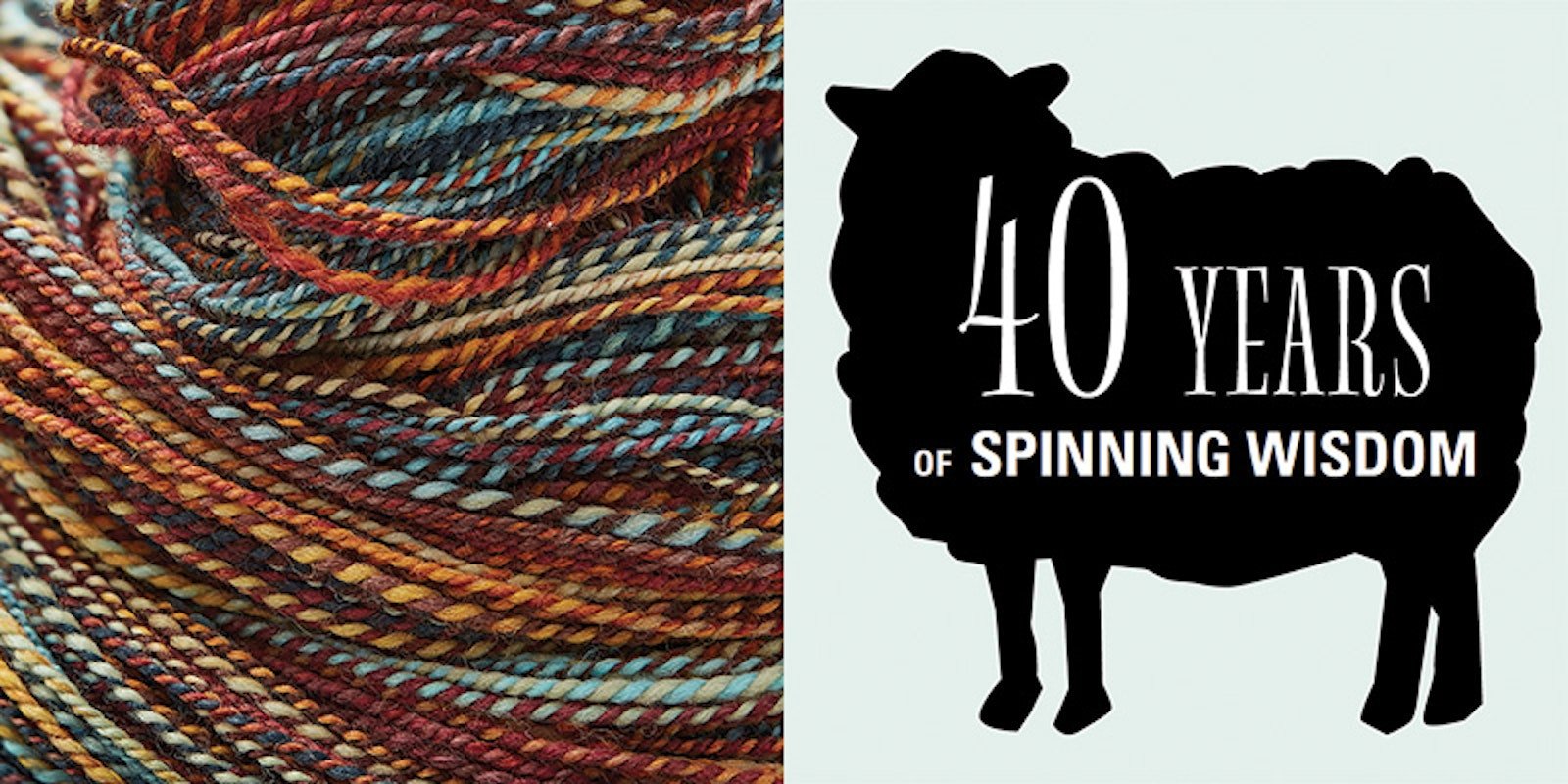Looking back at the abundance of handspinning tips published in the pages of Spin Off over the last 40 years, it became challenging to narrow it down, but we managed. Some tips made us giggle, others incited immediate nods of agreement and others . . . well, let’s just agree to disagree. Here’s what our contributors had to say about equipment and handspun fabric.
Kaye Collins demonstrates how to spin alpaca in the Fall 2000 issue. Photo by Joe Coca.
Equipment
“If you are not drafting at five to ten yards per minute, hold off on buying a wheel presented as a high performance or ‘production’ wheel unless you’re sure you will grow into it.” —Alden Amos, “Buyer’s Guide to Spinning Wheel Design.” 1980
“Some folks like to splice and sew their drive bands, but I figure the more time that goes into that drive band, the less likely you are to change it as it gets old and gritty . . . It’s just string! Change that drive cord as it gets old and nasty! It’s not meant to last for the life of your wheel.” —Cecilia Quinn, “Learning to Adjust the Bands That Govern the Flyer and Bobbin.” Summer 1987
“The bobbin brake bands also need to be changed! . . . If you put on a long length of brake band initially, you can cut off the frayed portion where it’s tied to the spring, and then reattach the new section.” —Cecilia Quinn, “Learning to Adjust the Bands That Govern the Flyer and Bobbin.” Summer 1987
“Spinners, forget the difficult trick of fanning out your leader and blending your spinning fiber with it. Instead, make a 1" loop at the end of your leader yarn. Then simply insert about 1" of your fiber and begin spinning. Works wonderfully! In the same manner, when you begin plying, you again insert an inch or so of the singles; as you begin spinning, they will be caught. When it’s time to disengage your yarn from the leader, unwind the end slightly and you can slip it out of the leader loop.” —Lucy Elmore, “Tips and Techniques: The Looped Leader.” Spring 1989
“To spin bulky singles—in volume, and comfortably—requires a bobbin-lead spinning wheel. The power from the treadle on this type of wheel goes directly to the bobbin, enhancing its ability to draw in.” —Priscilla A. Gibson-Roberts, “Bulky Singles for Knitting.” Winter 1992
“Being careful to wind on neatly isn’t just a fussy habit—it’s a lesson learned from experience. You can put a lot more yarn on the spindle, and you’ll have fewer tangles getting it off , if you wind firmly and compactly.” —Rita Buchanan, “Drop Spindle Basics.” Spring 1995
“For [supported] spinning and plying on the go, attach a piece of hook-and-loop tape to the bottom of the support bowl with the hook side against the bowl. When you’re ready to spin or ply, remove the loop side and anchor the bowl to your lap cloth; this will prevent it from slipping.” —Galina Khmeleva, “Plying the Orenburg Way: Tracing the Roots of a Classic Yarn.” Fall 2015
A blend of wool and silk fibers makes a delicious fabric in Anne Podlesak’s Hyde Park Stole from Summer 2013.
Handspun Fabric
“If you’re weaving with wool and you want your fabric to full nicely, don’t wash or block your warp before weaving it.” —Linda Ligon, “Singles Warp? Yes, You Can.” Summer 2010
[On plying] “Do it. Always. The introduction of knitting singles is simply the result of commercial yarn mills and handspinners who wish to save time by omitting the plying step. Plying increases the strength and abrasion resistance of a yarn.” —Donna Reynolds, “Handspun Knitwear That Lasts.” Summer 1983
“When skeining yarn off your bobbin, always label the end of the yarn which was spun first and be sure to begin knitting with this end. Knitting a yarn in the same direction as it was spun will reduce pilling.” —Donna Reynolds, “Handspun Knitwear That Lasts.” Summer 1983
“Unless you plan to start knitting immediately, store the yarn in skeins, not in balls. Balls—especially tightly wound ones—compromise loft and elasticity.” —Priscilla A. Gibson-Roberts, “Finishing a Woolen Knitting Yarn.” Summer 1985
“One way to test for durability is to prepare a sample skein and use that yarn to darn the worn areas of your favorite handknit socks. While it may take some time to get the results of this test, it is a good durability indicator in the long run.” —Merike Saarniit, “Spinning Sock Yarns.” Spring 2006
Did you miss last week’s post containing nine tips on fiber and fiber prep? Not to fear, find them here. Next up, we take a look at advice on at yarn structure as we count our way to 40. In the mean time, tell us your favorite bits of advice.



